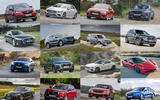Plug-in hybrids (PHEVs) are losing momentum in the car market in the UK and across Europe as regular hybrids and electric cars outpace them.
Sales of PHEVs, including 2021’s best-seller, the BMW 330e, are down 5.5% to the end of May in the UK, while sales of electric cars rose a massive 71%.
This meant EVs were twice as much in demand as PHEVs, which captured a 6.6% market share with sales of 43,549 in the first five months, down from a 7% share in 2021.
Sales of hybrids, meanwhile, soared 35% to 76,624.
The slump is playing out across Europe, too. Sales, led by the likes of the Ford Kuga PHEV, grew to reach a rolling 12-month total of one million in August last year and stayed there, month after month, before dropping back below that magic mark in May, according to data from Schmidt Automotive Research.

Sales of the cars are at the mercy of legislation on a country level, which either reward them for their claim to cut CO2 emissions below 50g/km in most cases or go back to treating them like any other ICE car, partly fuelled by claims that few if any ever get close to their claimed fuel consumption figure.
Examples of countries yanking PHEV support include Norway, where sales dropped 78% in the first quarter this year after key incentives ended at the beginning of the year, according to figures from European automotive lobby association the ACEA. Sales were also sharply down in Sweden, the fifth-biggest market for PHEVs, and Germany, the drivetrain’s biggest market.
Some car makers have avoided plug-in hybrids altogether. “We don’t build a product strategy on something that’s only going to last two years,” Dominique Boesch, managing director of Genesis Europe, said of the Korean premium brand’s strategy to grow here.











Add your comment